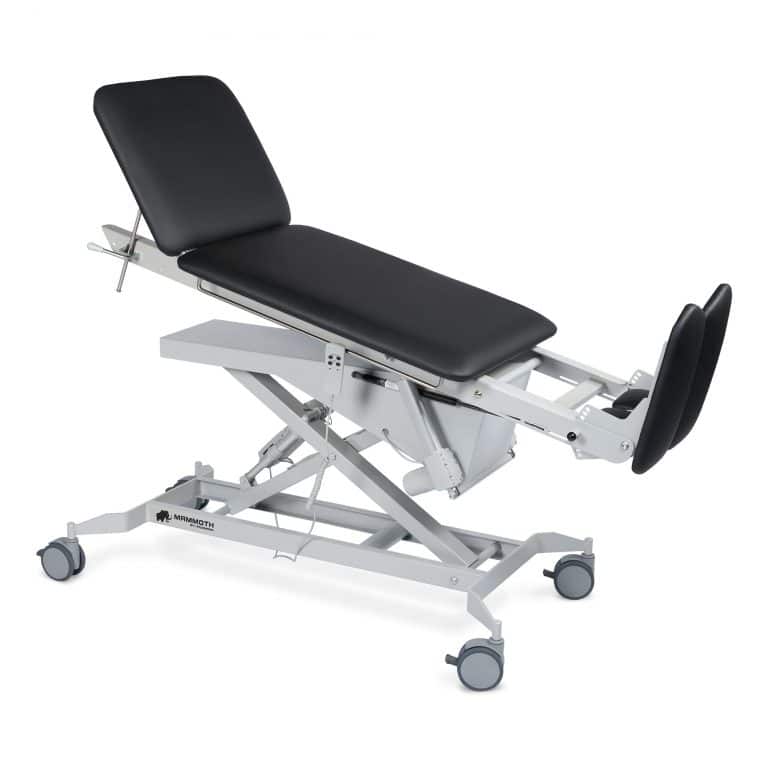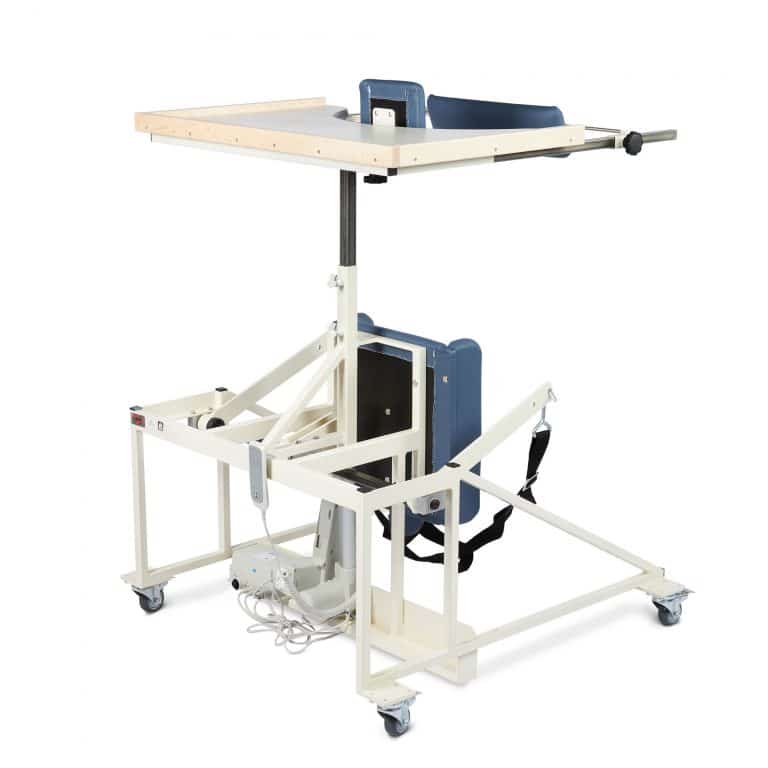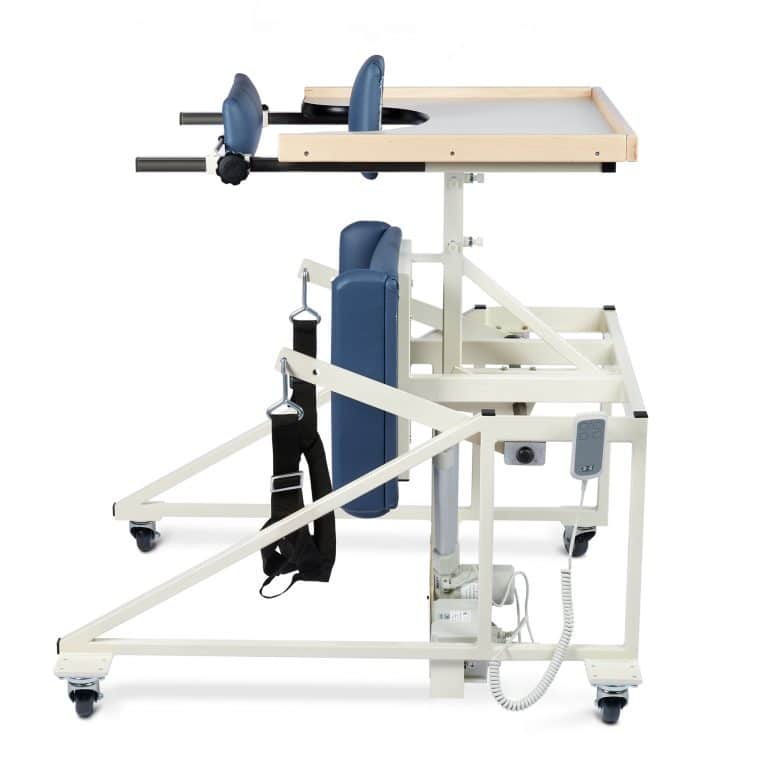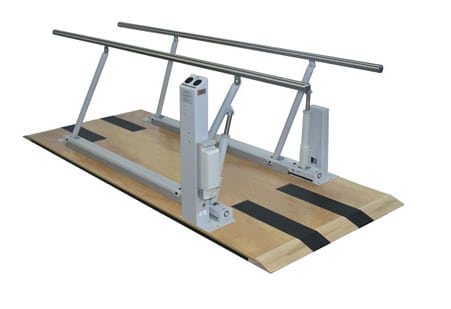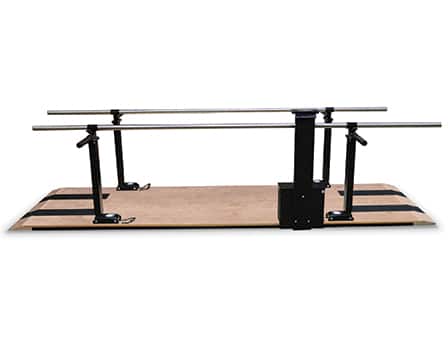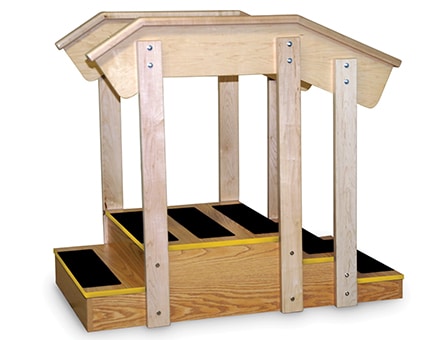
An Exclusive Suite of Products to Help Patients Get Back on Their Feet
Return to Mobility Overview
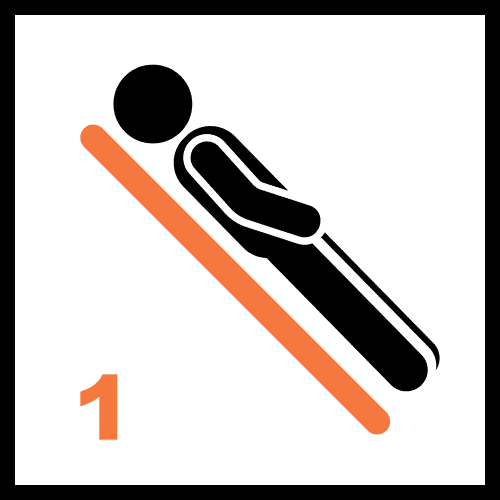
Tilt Tables
Use to reintroduce your patients to the vertical position
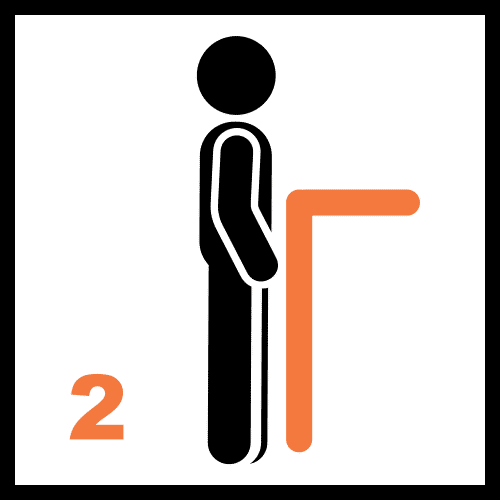
Stand-In Tables
Use for supporting your patients during standing
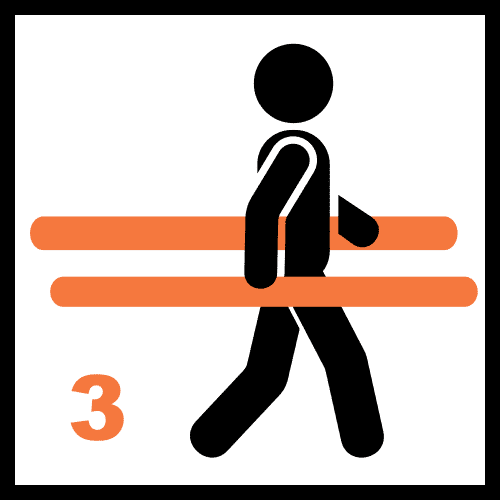
Parallel Bars
Use for stability and safety of your patients who are regaining mobility
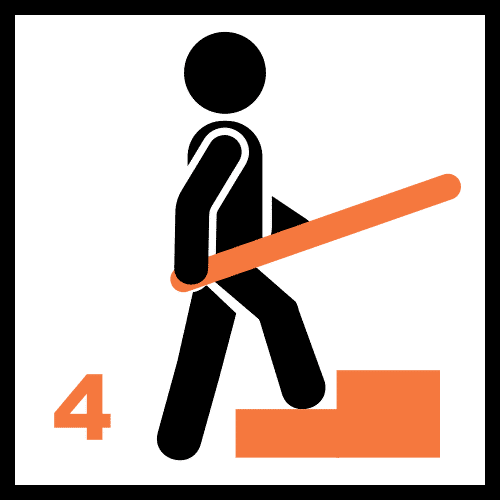
Training Stairs
Use with your patients for progressive step therapy
1. Tilt Table*
Tilt tables are used in rehabilitation as a means to introduce vertical positioning early in the rehabilitation process. This intervention can apply to patients who may have impaired levels of consciousness that affect participation in early mobility activities, may be unable to ambulate, or may have hemodynamic instability. Mobilizing patients to be upright is associated with the ability to walk sooner, become independent in activities of daily living, and shorter stays in the acute care setting.1
Features and Benefits
- Measurable angle range
- Patient security straps
- Adjustable foot plate
2. Stand-In Tables
6175, 6177
Stand-In tables are assistive devices used to lift and support patients into a standing position. The benefits of standing for patients include: positively affecting bone mineral density, hip stability, range of motion of hip, knee, and ankle, and spasticity.2
Features and Benefits
- Motorized patient lift can elevate a 500 lbs patient from a sitting to standing position – 6177 only
- Motorized height adjustment of top from 42.5” to 52.5” accommodates a variety of patient heights
- Padded knee, chest and back supports as well as lift harnesses provide greater patient comfort
3. Parallel Bars
1357, 1391, 1396
Parallel bars increase patient safety to work on several exercises, including gait training and balance. The bars increase stability and safety while the patient is regaining strength and mobility.
Features and Benefits – 1357
- Large range of height and width adjustability for use with adult or pediatric patients
- Battery powered which eliminates cords and the potential for trip hazards
- Built to fit more patients with a 600 lbs weight capacity with 300 lbs on each side
4. Training Stairs
1566, 1567, 1580
Training stairs are used to challenge patients with progressive stepping patterns and are commonly used after an injury or surgical procedure. The use of stair training is helpful in preparing patients for safer discharge to home and community. Stair training is shown to improve muscle strength, dynamic balance, and step length vs. groups not using stair training.3
Features and Benefits
- Safety treads on all steps and platform for improved traction
- Handrails are ergonomically designed for comfortable grip and ease of use
- BriteStep™ yellow high visibility edging for enhanced patient safety
Request More Information About Our Return to Mobility Suite of Products
* Not part of the current Hausmann product portfolio.
CITATIONS
1. Cumming TB, Thrift AG, Collier JM, Churilov L, Dewey HM, Donnan GA, et al. Very early mobilization after stroke fast-tracks return to walking: further results from the phase II AVERT randomized controlled trial. Stroke. 2011; 42:153–158
2. Paleg GS, Smith BA, Glickman LB. Systematic review and evidence-based clinical recommendations for dosing of pediatric supported standing programs. Pediatr Phys Ther. 2013; 25:232–47.
3. Koh, S., Choi, W., & Lee, S. (2021). The effects of stair climbing training with functional electrical stimulation on muscle strength, balance, and gait in patients with chronic stroke. Physical Therapy Rehabilitation Science, 10(1), 32–39.

